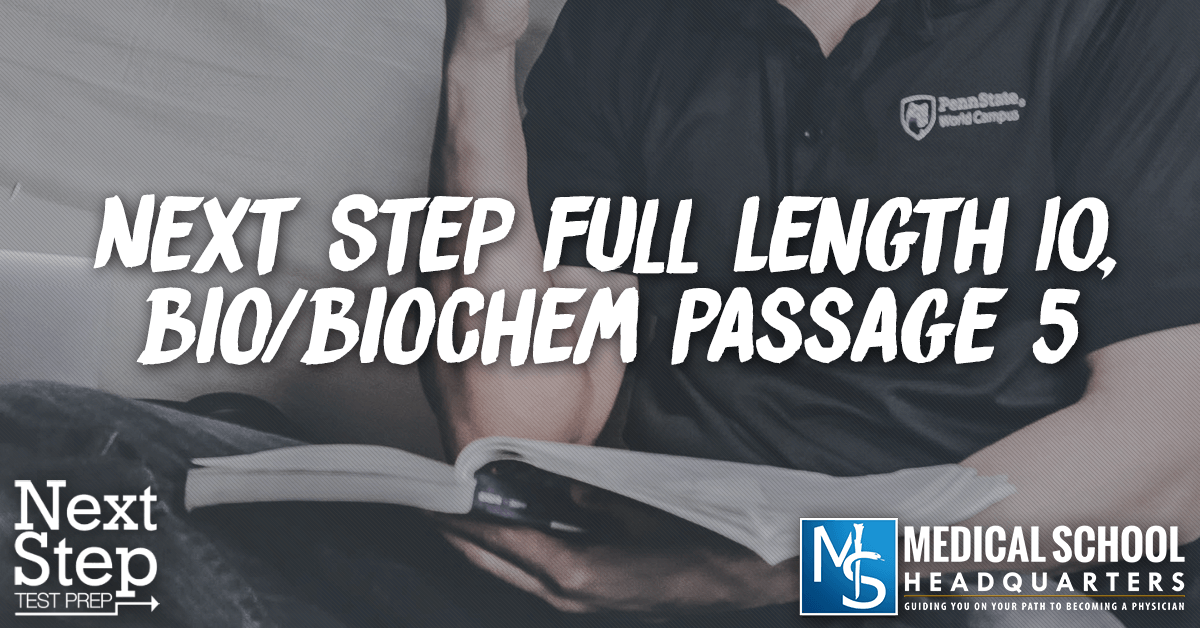
We tackle passage 5 from Next Step full-length 10 which talks about peripheral nerves and stem cells. Follow along with the handouts at themcatpodcast.com.
As always, we’re joined by Clara from Blueprint MCAT (formerly Next Step Test Prep) as we take a deep dive into another Bio/Biochem passage. Please take a listen to all our other podcasts on MedEd Media Network.
Injuries to peripheral nerves are common and after injury, the proximal stump of the nerve is capable of regeneration and reinnervation. Repair requires bridging the gap and the introduction of Schwann cells, growth factors, and an extracellular matrix for guiding axonal extension and nerve regeneration. Axons regenerated along align Schwann cells, called Bands of Büngner.
Stem cells may prove useful to treat spinal cord injuries. The availability of large numbers of human epidermal neural crest stem cells, hEPI-NCSC for autologous use and for disease modeling and drug discovering is highly desirable. hEPI-NCSC cells are biologically the most relevant cell plate to generate Schwann cells as they are direct descendants of the embryonic neural crest.
Notably, hEPI-NCSC can be isolated via a small biopsy of hairy skin. And they could be expanded ex vivo into millions of stem cells at adherent culture. In addition, hEPI-NCSC-derived Schwann cells express neurotrophins and other growth factors essential for nerve regeneration.
Angiogenesis is crucial for nerve repair. In vivo, Schwann cell precursors differentiate into immature Schwann cells which undergo terminal differentiation into one of two types of mature Schwann cell – myelinating and nonmyelinating. These mature cells rapidly proliferate with a doubling time of 12 hours. Schwann cell differentiation and maintenance are dependent on growth factors that are provided by the embryonic microenvironment and the axons with which they interact. To identify and examine the genes necessary for proper Schwann cell production, a comprehensive gene knock out profile was generated with RNA from hEPI-NCSC-derived Schwann cells. Individual genes were knocked out and then Schwann cell proliferation was measured by cell count after 24 hours.
Which of the following is not a potential advantage of using hEPI-NCSC over adult stem cells in the study?
Clara’s insights:
The right answer here is D. Just because it’s not mentioned in the passage doesn’t necessarily mean it’s wrong. In this case, the migratory activity in Choice B wasn’t mentioned either. And the “tumors” from Choice C weren’t really mentioned. Here, we’re just trying to figure out what is rational and what isn’t, hence, we came up with D.
If the cells don’t form tumors, that seems like an advantage since tumors would seem like a disadvantage. And then for B, the reason that migratory ability is an advantage is that neural crest cells are the cells we’re trying to isolate very close to their precursors. So if they had a significant migratory ability to travel far away, then we might not need to purify these cell cultures. You may only be left with the type of cell you want which migrated far away from the very similar precursors that might have been located into original position.
Current hEPI-NCSC treatments require that they can be used as a source of the stem cells utilized in their treatment. This is because:
Clara’s insights:
The correct answer here is C. There’s nothing special about stem cells. Any type of cell coming from another foreign cell to us is going to potentially raise the risk of rejection.
Damage to which of the following cell structures would not cause the mitotic rates measured in the experiment to be reduced.
Clara’s insights:
The correct answer here is A because B, C, and D are all involved in mitosis and A is not involved. The nucleolus is where we produce our ribosomal RNA, which is not directly involved in mitosis while the other ones are. The kinetochore is a protein complex found on the centromere. The centromere is where the chromosomes are being joined together and they’re being pulled apart by spindle fibers and the Kinetochore is the part of proteins on the centromere that the spindle fiber is attached to.
Which is the following cell types performs functions in the central nervous system and now, gets the Schwann cells?
Clara’s insights:
The correct answer here is C. Schwann cells have something to do with wrapping the peripheral nerves. The question is what wraps the nerve in the central nervous system. They are two very cell types but different locations.
If you’re trying to figure out where you’re going wrong, check out Blueprint MCAT (formerly Next Step Test Prep) and their tutoring options. Call them for a free consultation and they’ll figure out what’s wrong and what potential package would work best for you. Use the promo code MCATPOD and save $50 off their tutoring.

Lorem ipsum dolor sit amet, consectetur adipiscing elit
I just received my admission to XXXXX! This is unreal and almost feels like I am dreaming. I want to thank you for all of your help with my application. I cannot overstate how influential your guidance and insight have been with this result and I am eternally grateful for your support!
IM SO HAPPY!!!! THANK YOU SO MUCH FOR ALL YOUR HELP, IM INDEBTED TO YOU! Truly, thank you so much for all your help. Thank you doesnt do enough.
I want to take a few moments and thank you for all of your very instructive, kind and consistent feedback and support through my applications and it is your wishes, feedback, and most importantly your blessings that have landed me the acceptance!
I got into XXXXX this morning!!!! It still has not hit me that I will be a doctor now!! Thank you for all your help, your words and motivation have brought me to this point.
I wanted to once again express my heartfelt gratitude for your help in providing feedback during my secondary applications. Your guidance has been instrumental in my journey.
Just wanted to share my wonderful news! I received my first medical school acceptance! Thank you for all that you do for us Application Academy!!!
I am excited to tell you that I just got my third interview invite from XXXXX today! I can’t believe it. I didn’t even know if I was good enough to get one, let alone three – by mid-September. Thank you so much for all of your help and support up to this point; I would not be in this position without it!!
I wanted to thank you for helping me prepare for my XXXXX interview. Even in a 30-minute advising session, I learned so much from you. Thank you for believing in me, and here’s to another potential success story from one of your advisees!
I just received an acceptance with XXXXX! This is so exciting and such a huge relief and so nice to have one of our top choice schools! I also received an interview with XXXXX which brings the total up to 20 interviews! Thank so much, none of this would have been possible without you!

Join our newsletter to stay up to date
* By subscribing you agree to with our Privacy Policy and provide consent to receive updates from our company.
Resources
Advising Services
Podcasts & Youtube
Books
About
Deal Lasts for
